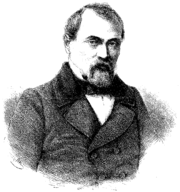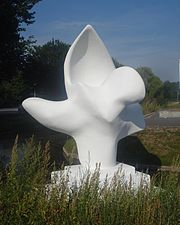Design
Design
Personality
Chart Properties
Your Cross represents the specific theme of your life. This cross embodies your unique potential & the lessons you're here to learn, providing a roadmap to fulfilling your life purpose.
We use the UTC birth time and date to do the calculations required to generate your Human Design chart.
Buy Tokens
Pay as you use, no expiry and no subscription required.Antoine de Saint-Exupéry's Biography
French pilot and writer who influenced the world of aviation literature with his novels “Night Flight,” 1931, “Wind, Sand and Stars,” 1939 and “The Little Prince,” in 1943. With his courage and sensitivity, Saint-Exupéry was at the dawn of aviation history, exploring the skies and opening up commercial air routes in Europe, North Africa and South America.
During WW II, he flew reconnaissance missions during the Nazi invasion of France. Antoine disappeared mysteriously on his seventh mission on 7/31/1944 over the Mediterranean Alps in his P-38 Lightning. He was presumed dead by authorities either by crashing, being shot down or committing suicide. No trace of his body or plane had been found.
Saint-Exupéry grew up in an impoverished noble family. His father, Jean de Saint-Exupéry, worked for an insurance company. His mother, Marie, indulged her son and her other four children. He was brought up in two chateaux owned by his great aunt and his maternal grandparents. His father died when he was four years old. He displayed unruly behavior and was extremely willful to the nannies who tried to raise the boy and his siblings.
At 12, Saint-Exupéry tried to build an airborne bike. He was an avid reader who read Jules Verne and Hans Christian Anderson. Failing as a naval candidate at the Ecole Bossuet in Paris, he borrowed money from his mother and enrolled at the Beaux-Arts school to try his hand at architecture. He used his noble background to be invited to the best houses and enjoyed the lavish dinners and milieu of fellow aristocrats.
In 1921, he went to the Strasbourg military base and was awarded his pilot’s license the following year. He went to work for a commercial airline company as an international air mail pilot and by 1926 was flying mail from Casablanca to Dakar. He wrote in his personal journal in cafes in Paris and when he traveled.
In 1929, Saint-Exupéry wrote his first novel, “Southern Mail.” The book was well received and he had an audience of readers interested in the world of aviation. The brotherhood of French pilots did not approve of Saint-Exupery’s metaphors and florid descriptions of their profession and he was soon excluded from their ranks. He went to Argentina to organize the mail route and stayed for two years. While there, he wrote “Night Flight,” published in October 1931. Six months after the book’s publication, he was frozen out of the flying profession.
While in Argentina, Saint-Exupéry met his lovely Salvadoran wife, Consuelo Gomez Carillo. She was widely extravagant and jealous of his literary success. Tiny and capricious, she conducted affairs with other men with little attempt at concealment, causing him pain and suffering during their tumultuous marriage.
Saint-Exupéry crashed in a navigational accident with his mechanic during a Paris-Saigon flight in 1935. He managed to survive in the Egyptian desert and was rescued after three days. In 1938, he crashed with his mechanic on takeoff from Guatemala City; he survived but with serious injuries. The mistake was pilot-error; he forgot to check the airplane’s loading security. In 1940, Saint-Exupéry was nearly shot down by the Nazis. He turned the experience into his book, “Flight to Arras.” During WW II, he tried to gain a slot on a reconnaissance squadron. He spent many years grounded in New York where he worked on his book, “The Little Prince.” He returned to North Africa to help liberate France. On his seventh reconnaissance mission Saint-Exupéry disappeared. His plane wreckage was discovered in the Mediterranean sea, south of Marseilles, in 1998; the cause undetermined.
Link to Wikipedia biography
Your Cross represents the specific theme of your life. This cross embodies your unique potential & the lessons you're here to learn, providing a roadmap to fulfilling your life purpose.
We use the UTC birth time and date to do the calculations required to generate your Human Design chart.







